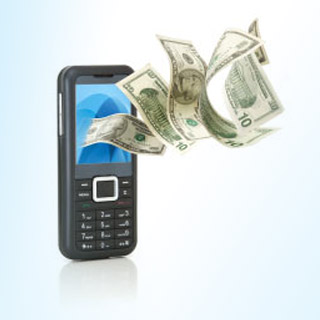 A recent study forecasting enormous growth in mobile payments for digital and physical goods comes as no great surprise.
A recent study forecasting enormous growth in mobile payments for digital and physical goods comes as no great surprise.
Money transfers via mobile devices are expected to hit $240 billion this year growing to $670 billion within four years, according to research from London-based Juniper Research.
Some of the drivers for the coming increase in mobile transactions are various forms of enabling technologies. One method is known as NFC (Near Field Communications) that allow payments essentially by swiping a phone near a device. About 20 countries are expected to launch NFC services with transactions worth $50 billion within the next two years, according to the Juniper study.
And that’s just one of several methods of mobile purchasing that will become routine. Consumers already order many items from their phones even while they shop at physical retail stores.
Movie tickets can be bought on the move from Fandango, smartphone owners can use the Starbucks app to pay for drinks from a code on their phone read by special readers at checkout and consumers can mobile buy at any time from retailers ranging from Amazon to Walgreens no matter where they are at the time.
Technologies that allow payments by swiping or bumping phones or even by plugging a small credit card reading device from Square into a smartphone turning it into an instant cash register are here.
But the technologies are just the enablement part of the picture, not the primary driver. What’s causing the mobile transactions market to move along is much more behavioral than technological.
It is simply easier and more practical to pay by phone than by other methods. No plastic to dig out of a wallet, no cash to count out, the phone is always within easy reach and already enough of a computer to do on-the-spot calculations and transactions.
Swiping or bumping a phone eliminates human interaction and totally empowers the individual conducting the buying with their phone. Check out when they want and payment when they want.
Three regions (North America, Western Europe and the Far East/China) are expected to account for three quarters of all global mobile payment transaction value within four years, Juniper found, meaning it will become very common for consumers in those markets.
The speed of adoption cannot be underestimated, since people already have mobile phones, with half in the U.S. soon to be smartphones. Many in countries outside the U.S. already pay by mobile phone.
The only issue is when mobile transactions hit critical mass. Will you pay by phone?
Chuck Martin
Chuck Martin is a New York Times business bestselling author. He is CEO of Mobile Future Institute and Director of the Center for Media Research, MediaPost Communications. His latest book is The Third Screen: Marketing to Your Customers in a World Gone Mobile.